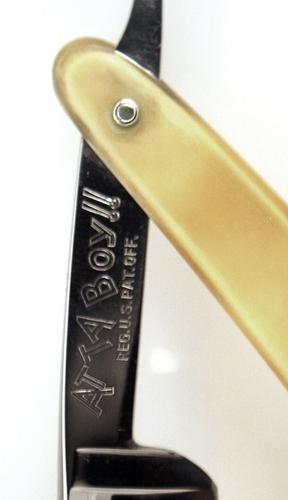Results 1 to 10 of 67
Hybrid View
-
12-12-2016, 10:25 PM #1

I look at breadboarding as something you do straight up and down BEFORE high-angle honing and finally spine flat.
Alas, extreme measures for extreme circumstances!
Now a light stroke on a glass bottle or the corner of the hone I have always referred to as 'killing' the edge, the bottle being less extreme......
It's all so confusing, this terminology and such, but I usually just call a spade.....A spade!
-
12-12-2016, 10:28 PM #2At this point in time...




- Join Date
- Jun 2007
- Location
- North Idaho Redoubt
- Posts
- 27,190
- Blog Entries
- 1
Thanked: 13250
-
-
12-12-2016, 11:06 PM #3

Whatever we want to call it, I did three more blades last night and I'm sold. We can argue all day about a name for or theories behind the practice, but the fact is MY edges are coming out better.
B.J.
-
The Following User Says Thank You to BeJay For This Useful Post:
sharptonn (12-13-2016)
-
12-12-2016, 11:13 PM #4
-
12-12-2016, 11:35 PM #5
-
The Following User Says Thank You to sharptonn For This Useful Post:
BeJay (12-13-2016)
-
12-13-2016, 12:41 AM #6
-
12-13-2016, 01:33 AM #7

Never saw the Iwasaki video but I did try this technique a time or two and it worked great. Slight pressure on the side of the stone at 90 degrees and the microchips were gone. 20 or so edge-leading laps and the edge was golden. I don't use it every time (don't do many restorations) but yes, I will continue to use this when necessary.
-
12-13-2016, 10:49 PM #8illegitimum non carborundum



- Join Date
- Jan 2008
- Location
- Rochester, MN
- Posts
- 11,552
- Blog Entries
- 1
Thanked: 3795
And that is all that matters.

Have you done all of them as you described above? That is, did you join/joint on the 1k and then use your nail after higher grits? Have you considered doing one and not the other, and vice versa, to figure out which is contributing to the improvement?
-
12-13-2016, 11:07 PM #9Senior Member


- Join Date
- Apr 2008
- Location
- Saint Paul, Minnesota, United States
- Posts
- 2,944
Thanked: 433
i only "edge" blades when they are chippy or crumbly, usually vintage blades with hone wear were the bevel got to thin, I edge those type blades and add two layers of tape and it's usually problem solved.
-
12-14-2016, 12:45 AM #10

Yes I've used the same routine for all of them. I've done enough to see that I'm consistently getting positive results, and I plan to do some more experimenting as you've described above. Right now I'm thinking that the fingernail before the finisher will be the one that has the biggest impact. Should have it figured out in a few more days. I'm trying to be very thorough as this may change my routine in the future. I don't want to add an extra step for the next several years that's not doing anything for me.
I, like you, thought that jointing was silly and made no sense. It seems to have proven itself useful in my routine though. I do use Japanese/half stokes when setting bevels instead of the more popular circle method. I always switch to heel forward and x strokes when the bevel starts to come in. Perhaps this is somehow correcting a condition that I didn't know was an issue in my routine.
I'm really having fun with this. My honing seems to have hit a plateau for the last year or so and it's exciting to be taking another step forward. It's a baby step, but a step none the less.B.J.
-
The Following User Says Thank You to BeJay For This Useful Post:
Utopian (12-14-2016)


 174Likes
174Likes LinkBack URL
LinkBack URL About LinkBacks
About LinkBacks









 Reply With Quote
Reply With Quote




